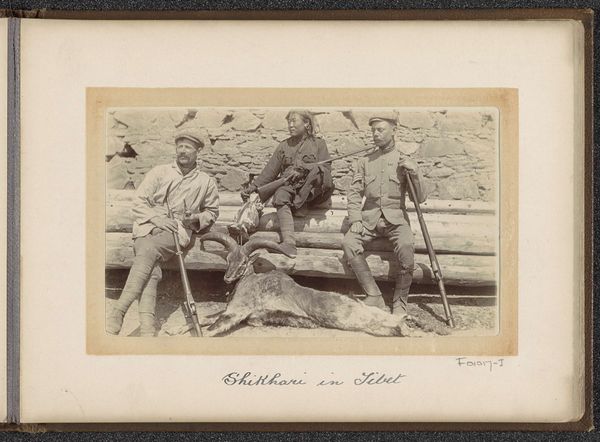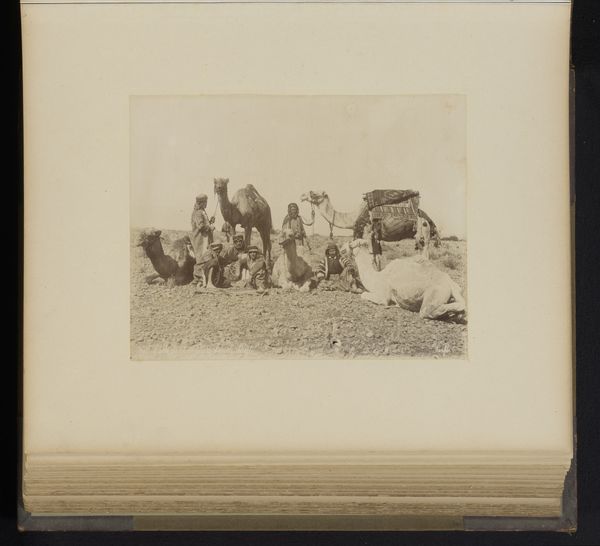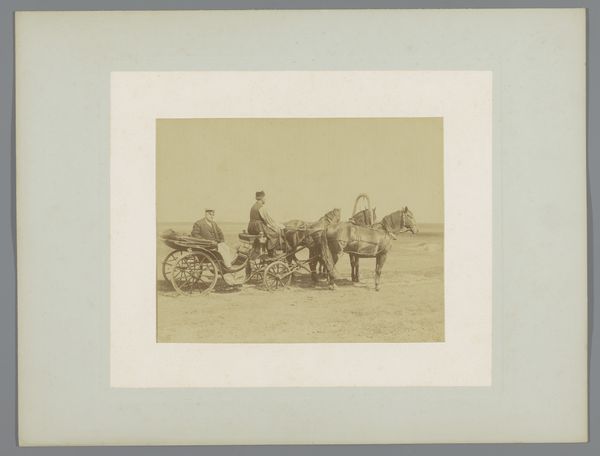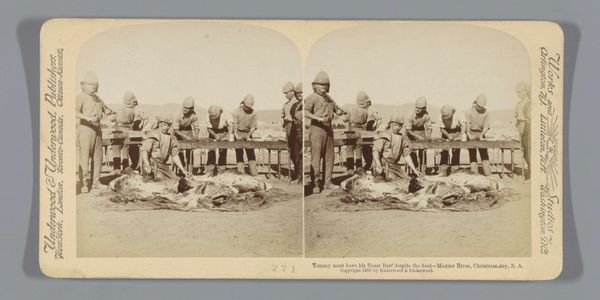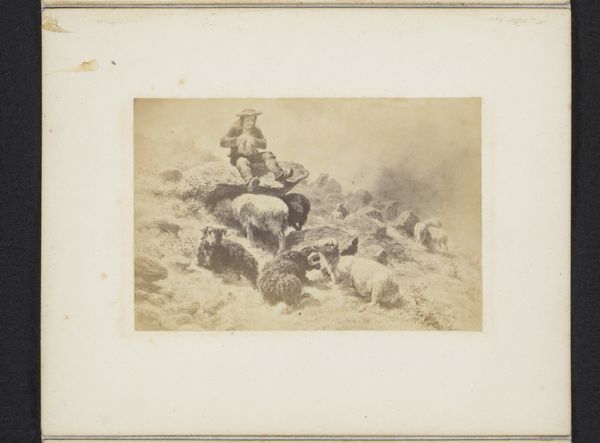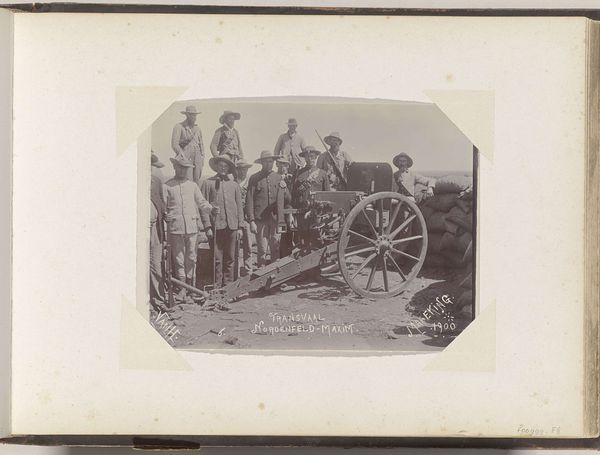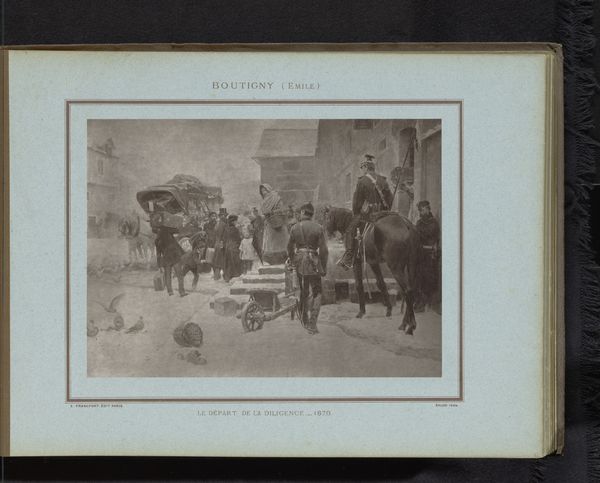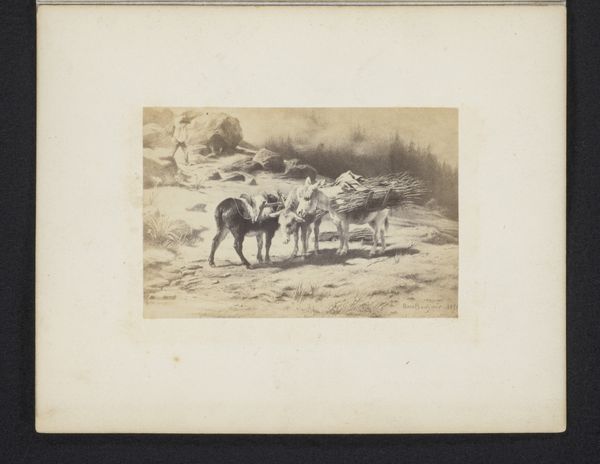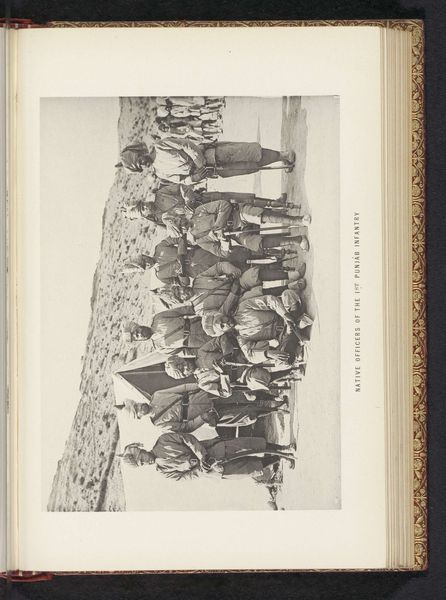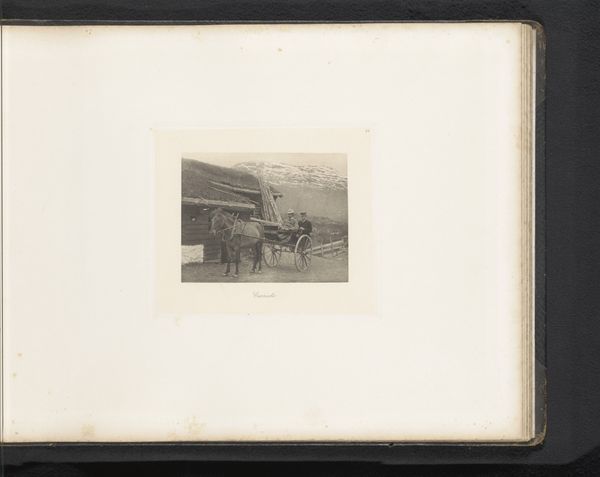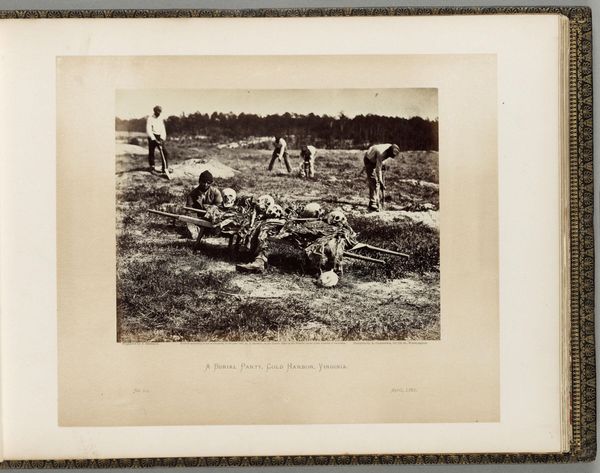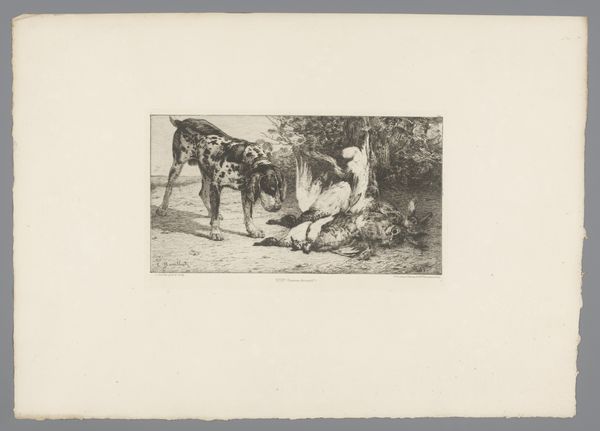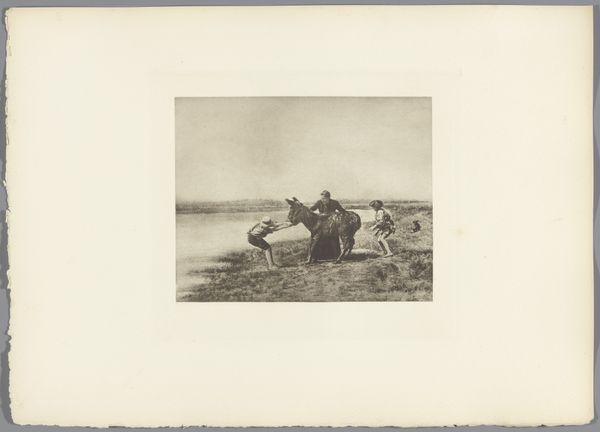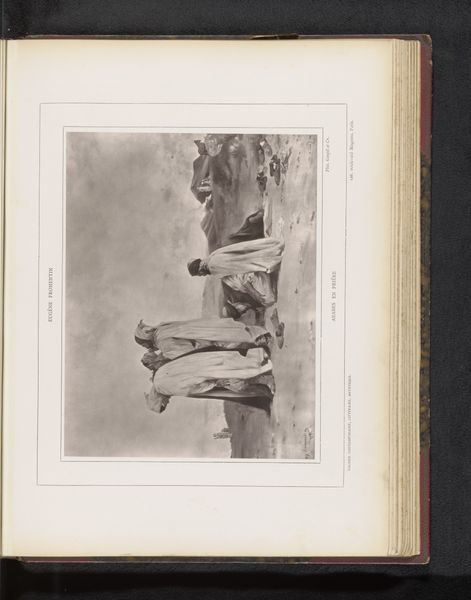
Shikhari's (jachtgidsen), een Engelsman en jachtbuit in Tibet 1903 - 1906
0:00
0:00
dtdalton
Rijksmuseum
photography, gelatin-silver-print
#
portrait
#
narrative-art
#
pictorialism
#
landscape
#
photography
#
orientalism
#
gelatin-silver-print
Dimensions: height 80 mm, width 137 mm
Copyright: Rijks Museum: Open Domain
Editor: So, this photograph is called "Shikhari's (jachtgidsen), een Engelsman en jachtbuit in Tibet," which translates to "Hunters (hunting guides), an Englishman and the spoils of the hunt in Tibet," taken between 1903 and 1906 by D.T. Dalton. It’s a gelatin silver print, and it's… well, it’s quite a stark image. It seems to be very much of its time, depicting what I assume is a hunting expedition. What strikes you about it? Curator: What immediately grabs my attention is the confluence of materials at play here: gelatin silver, the furs, the weaponry. It’s a photograph about claiming resources. Consider the very act of photography at that time – the material cost of film, equipment, travel – against the backdrop of colonial expansion. This hunt wasn't just about sustenance or sport; it was a demonstration of power through resource extraction, immortalized through a particular photographic process available only to some. How does the 'pictorialism' style connect with that message for you? Editor: That makes sense. Pictorialism used soft focus and printing techniques to make photography more "artistic," mimicking painting. So, the 'art' elevates this… colonial hunting scene, imbuing it with a kind of… romanticism? A gloss on resource control? Curator: Exactly. Think about who this photograph was *for*. The soft focus aesthetic camouflages some of the brutality, doesn't it? It transforms labor into something almost… beautiful? Whose labor produced this image? Where does class factor in the image's distribution? Those kinds of questions reveal the picture’s intent to validate an oppressive class structure. Editor: So, rather than just seeing a historical hunting scene, we should be analyzing it as a record of material exploitation and a social hierarchy. The technology, the slain animals, the roles of the figures... it's all interconnected. Curator: Precisely. The materials aren’t just inert objects, they are stand-ins for economic and class structures that underpinned them, and continue to do so today. The photo helps the story travel. Editor: That definitely changes how I view it. Thanks, that’s incredibly helpful. I will be more mindful of this picture's social context now, and I will always see more than just an old photo.
Comments
No comments
Be the first to comment and join the conversation on the ultimate creative platform.
